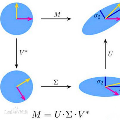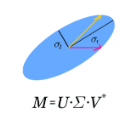This article introduces a novel methodology that integrates singular value decomposition (SVD) with a shallow linear neural network for forecasting high resolution fluid mechanics data. The method, termed LC-SVD-DLinear, combines a low-cost variant of singular value decomposition (LC-SVD) with the DLinear architecture, which decomposes the input features-specifically, the temporal coefficients-into trend and seasonality components, enabling a shallow neural network to capture the non-linear dynamics of the temporal data. This methodology uses under-resolved data, which can either be input directly into the hybrid model or downsampled from high resolution using two distinct techniques provided by the methodology. Working with under-resolved cases helps reduce the overall computational cost. Additionally, we present a variant of the method, LC-HOSVD-DLinear, which combines a low-cost version of the high-order singular value decomposition (LC-HOSVD) algorithm with the DLinear network, designed for high-order data. These approaches have been validated using two datasets: first, a numerical simulation of three-dimensional flow past a circular cylinder at $Re = 220$; and second, an experimental dataset of turbulent flow passing a circular cylinder at $Re = 2600$. The combination of these datasets demonstrates the robustness of the method. The forecasting and reconstruction results are evaluated through various error metrics, including uncertainty quantification. The work developed in this article will be included in the next release of ModelFLOWs-app
翻译:暂无翻译





